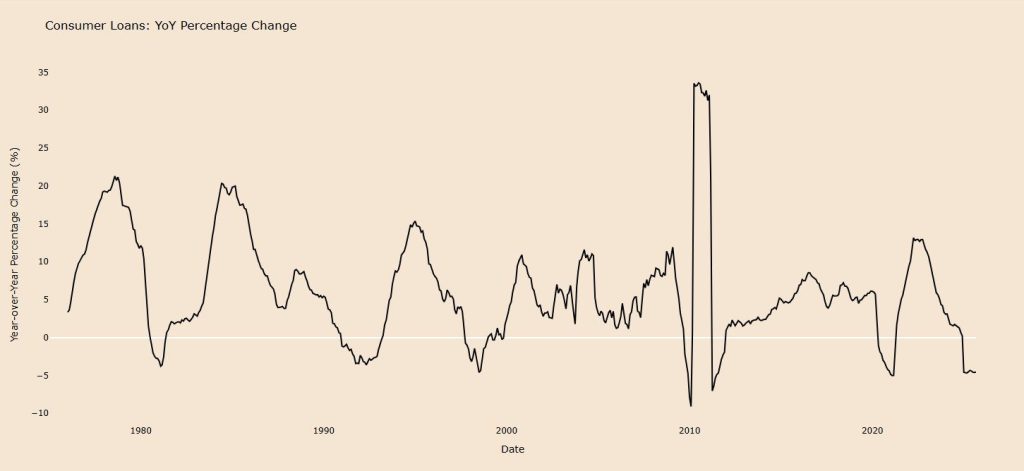Tether, the leading stablecoin issuer, is positioning itself to compete with banks in loans for commodity trading after deploying approximately $1.5 billion in credit to the market, according to a Bloomberg report.
Tether CEO Paolo Ardoino revealed on November 14 that the company intends to expand its lending activities across multiple commodity markets, from oil and cotton to wheat and various agricultural products.
The company has provided loans in both US dollars and its USDT stablecoin, which is backed by US Treasury bills and precious metals such as gold.
While Tether remains a minority player compared to banks most active in commodity lending, the revenue it generates from its nearly $200 billion in reserves gives the company significant firepower to compete.
Last October, Cryptonews covered Tether’s preliminary talks with multiple companies about dollar-denominated lending projects.
At that time, Ardoino noted: “We are unlikely to publicly share specific investment figures for commodity trading. Our strategy is still taking shape.”
He highlighted that the future prospects are “enormous”, and Tether is willing to pursue various opportunities within the commodity markets.
The current commodity lending model
Commodity trade loans are essentially short-term credits that help commodity producers, traders and buyers manage the timelines and costs associated with purchasing, transporting and selling physical goods.
Historically, banks have played this role by helping merchants manage cash flow gaps between upstream payments to suppliers and downstream collections from customers.
However, the process tends to be documentation-intensive and time-consuming, although banks bring decades of operational knowledge, regulatory frameworks and long-standing partnerships with major commodities companies.
How Tether’s approach is different
Tether’s commodity lending model operates in a simpler and faster way; Instead of relying solely on bank transfers or letters of credit, it lends US dollars or USDT directly to commodity traders.
Because USDT transfers settle almost instantly across borders, it is already widely used in emerging markets, particularly in commodity exporting regions.
Tether can offer faster access to working capital when traders need liquidity most.
Where Tether could also rival banks is in settlement speed and access to liquidity in markets where traditional financing is slow or expensive.
A merchant who might wait days for a bank to process a loan or verify documents could receive funds in minutes via USDT, allowing them to move cargo or secure a shipment before prices change.
Tether’s push to finance commodities comes several years after traditional banks reduced their exposure to this sector following multiple high-profile failures and fraud allegations that damaged lender confidence.

This has led to a growing market for private credit, especially for financing deals in riskier locations where banks are less willing to lend.
For Tether and other private lenders, commodity financing is also attractive because credit lines typically cycle through multiple draws within short time frames, generating frequent and consistent interest payments.
Tether financial position
Tether seems unstoppable right now, with the world’s largest stablecoin issuer on track to generate approximately $15 billion this year.
Bitwise Chief Investment Officer Matt Houga recently predicted that Tether could become the most profitable company in the world, potentially surpassing Saudi Aramco.
It is the third largest digital asset in the world with a market capitalization of $183.8 billion, up 50% from this time last year.
Although Tether maintains strong cash reserves, recent reports suggest the company could seek $20 billion in new capital for a 3% stake.
Such a transaction would establish a valuation close to $500 billion, eclipsing Netflix and Samsung and approaching iconic financial services brands like Mastercard.
At the same time, the company has expanded its precious metals holdings, and its gold reserves now exceed $12 billion.
To support this expansion, Tether recently brought in leadership from HSBC’s metals division to strengthen its bullion infrastructure.
The post Stablecoin Issuer Tether Established for Rival Banks in Commodity Trading Loans appeared first on Criptonoticias.

 Bitwise CIO says Tether could become the world’s most profitable company, surpassing Saudi Aramco’s $120 billion profits with assets of $3 trillion.
Bitwise CIO says Tether could become the world’s most profitable company, surpassing Saudi Aramco’s $120 billion profits with assets of $3 trillion. (@paoloardoino)
(@paoloardoino) 
